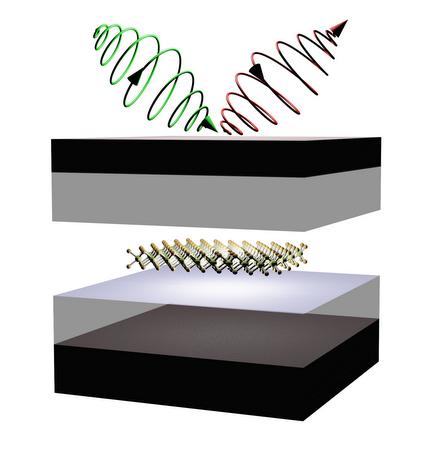

Schematic showing control of valley properties in 2-D semiconductors embedded in microcavity.
Image courtesy: Zheng Sun
Now City College of New York physicists led by Vinod Menon have demonstrated how to manipulate the “valley” property using light by placing two-dimensional semiconductors in a light trapping structure called microcavity.
This gave rise to half-light-half matter quasi-particles which have the fingerprint of the “valley” property. These quasi-particles were then optically controlled using a laser to access the electrons occupying specific “valley.”
The research appears in the latest issue of Nature Photonics and is a major step towards realization of “valleytronic” devices for logic gates.
“Observing this property in traditional semiconductors was not easy. However with the advent of the new class of two-dimensional semiconductors, this property became accessible to manipulation,” said Zheng Sun, a graduate student in Menon's research group and lead author of the paper.
###
Other researchers included CCNY graduate students, Jie Gu and Christopher Considine; undergraduate Michael Dollar, postdoctoral researcher Biswanath Chakraborty, Zav Shotan, and Xiaoze Liu; physics professor Pouyan Ghaemi and his postdoctoral researcher Areg Ghazaryan; and Stephane Kena-Cohen (Ecole Polytechnic, Montreal, Canada) also participated in the study.
The work was supported by the NSF through the EFRI 2-DARE program, the ECCS division, the Columbia-CCNY NSF MRSEC Center, the US Army Research Office and a Discovery grant from the Natural Sciences and Engineering Research Council of Canada.












